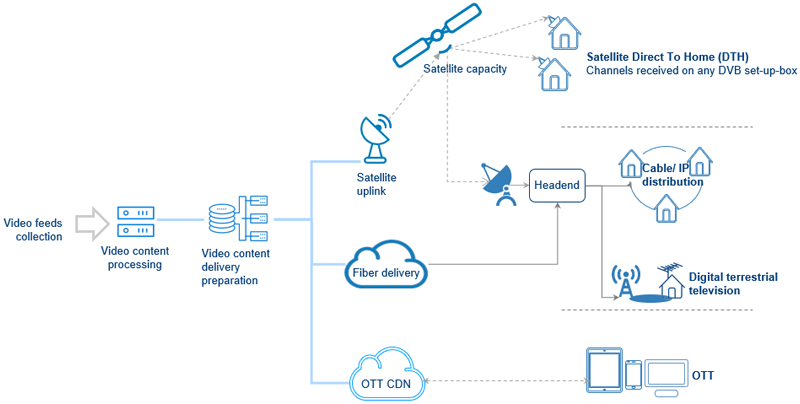The Best Strategy To Use For Apollo Group Tv
Table of ContentsFascination About Apollo Group TvWhat Does Apollo Group Tv Mean?Top Guidelines Of Apollo Group TvApollo Group Tv Fundamentals Explained
In this situation, instead of having three-minute business spots throughout a 30-minute tv program, television shows might alter to one where a consumer will be needed to have a monthly subscription, to make sure that they cen sight targeted banner advertisements. This kind of advertising and marketing already happens on the web, and the quantity of information television companies accumulate permits them to do much the same.Discuss the impact of sponsors on program content. Define the major trends amongst the broadcasting and cable television networks. When tv was in its infancy, manufacturers modeled the brand-new medium on radio. Popular radio reveals such as police drama Dragnet and western cowboy series Gunsmoke were adjusted for television, and new television shows were sponsored by single advertisers, simply as radio shows had actually been.
Today, the tv sector is even more complex. Programs are funded by several advertisers; shows is regulated by significant media empires; and the 3 significant networks no more dominate the airwaves yet instead share their customers with various wire networks. Numerous aspects make up these patterns within the market, consisting of technical developments, government laws, and the production of brand-new networks.

Getting The Apollo Group Tv To Work
Established in 1969, (PBS) created out of a report by the Carnegie Commission on Educational Tv, which analyzed the role of educational, noncommercial television on culture. Public tv was also planned to offer universal access to television for audiences in country locations or visitors that can not pay for to pay for personal television services.
The period in between 1950 and 1970 is traditionally acknowledged as the. Aside from a tiny portion of airtime managed by public television, the three major networks (understood as the Big 3) controlled the tv market, collectively representing more than 95 percent of prime-time viewing. In 1986, Rupert Murdoch, the head of multinational company Information Corp, released the Fox network, testing the prominence of the Big Three.
Targeting young and minority audiences with shows such as Buffy the Vampire Killer, Moesha, Dawson's Creek, and The Wayans Bros., the brand-new networks intended to draw stations away from their old network associations. Nevertheless, rather than duplicating the success of Fox, UPN and WB had check here a hard time to make an impact. Incapable to draw in lots of affiliate stations, both new networks got to less homes than their larger rivals because they were impossible in some smaller sized cities.
This decision led the way for the advancement of cord film networks, adding to the exponential development of cable television in the 1980s and 1990s. apollo group tv app. Further deregulation of cord in the 1984 Wire Communications Policy Act eliminated constraints on cable television rates, making it possible for operators to bill what they wanted for cable services as long as there worked competition to the solution (a requirement that over 90 percent of all cable markets could fulfill)
Not known Facts About Apollo Group Tv

Having actually produced the first "superstation," Turner expanded his world by establishing 24-hour information network CNN in 1980. At the end of the year, 28 national shows services were available, and the cable television revolution had actually begun. Over the following years, the market undertook a duration of fast growth and popularity, and by 1994 viewers might pick from 94 standard and 20 premium cord solutions.
Number 9 - https://canvas.instructure.com/eportfolios/3233536/Home/Apollo_TV_Group_Your_Ultimate_Streaming_Destination.16 Raised competition from wire networks has caused a consistent decrease in the networks' target market scores. During the 1950s, the price of generating a solitary television show raised as shows came to be much longer and production expenses skyrocketed. Sponsorship on network tv changed from single sponsorship, in which a program was completely sustained and produced by one marketer, to numerous sponsorship, in which marketers purchased 1- or 2-minute spots on the program
Each feedback ought to be a minimum of one paragraph. Select one of the Big 4 networks and publish out its once a week programming timetable. View the network's prime-time programs over the training course of a week, keeping in mind the target group for each program. Observe the advertising sponsors that sustain each program and compare just how the items and services fit with the intended target market.
An Unbiased View of Apollo Group Tv

Straight TV, commonly referred to as typical program TV, incorporates cord and satellite television. It's called "linear" since material follows an established shows routine, unlike on-demand content which the private viewer determines to view based upon their own choices and schedule. So, when you ask, "What is straight television?", think about it as the classic way of watching TV that has actually been around for decades.